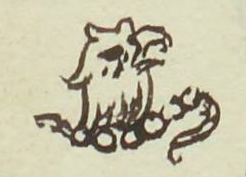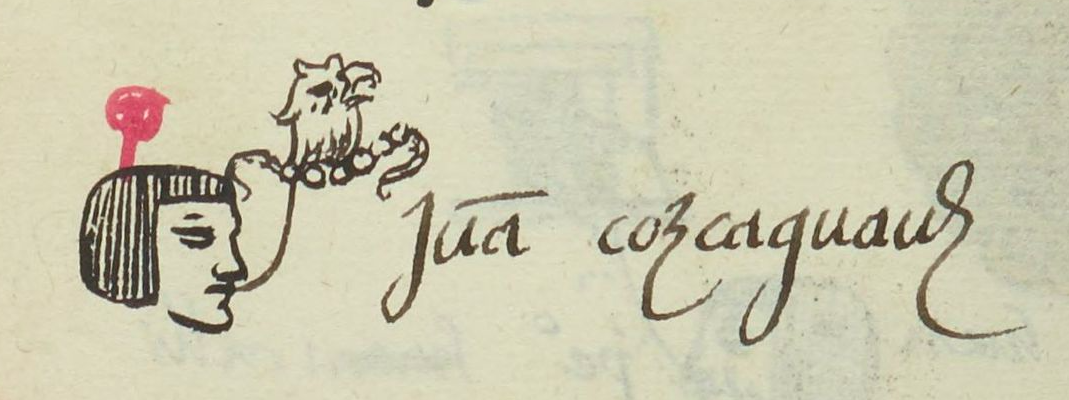Cozcacuauh (MH485v)
This compound glyph represents the personal name Cozcacuauh, "King Vulture," attested here as a man's name. It is a black line drawing of the head of the bird looking to the viewer's right. Its beak is open. A horizontal necklace (cozcatl) appears below an eagle's head (cuauhtli).
Stephanie Wood
The necklace does not have a semantic contribution; it provides the phonetic "cozca" that is the start of the word for vulture. Otherwise, the person'a name might be mistaken for simply "Cuauh," Eagle. Thus, this compound comprises two phonograms.
Cozcacuauhtli is a day sign in the tonalpohualli, the 260-day divinatory calendar. Normally, the vulture would have a numerical companion from 1 to 13, but the number has been inadvertently dropped or suppressed. Calendrics figure importantly in Nahuas' religious views of the cosmos.
Stephanie Wood
juā cozcaquauh
Juan Cozcacuauh
Stephanie Wood
1560
Xitlali Torres and Stephanie Wood
birds, aves, vultures, buitres, collares, necklaces, nombres de hombres, ave, pájaro, pájaros, pluma, plumas, animals, animales

cozcacuauh(tli), vulture, https://nahuatl.wired-humanities.org/content/cozcacuauhtli
cozca(tl), necklace, https://nahuatl.wired-humanities.org/content/cozcatl-0
cuauh(tli), eagle, https://nahuatl.wired-humanities.org/content/cuauhtli
Buitre
Stephanie Wood
Matrícula de Huexotzinco, folio 485v, World Digital Library, https://www.loc.gov/resource/gdcwdl.wdl_15282/?sp=45&st=image
This manuscript is hosted by the Library of Congress and the World Digital Library; used here with the Creative Commons, “Attribution-NonCommercial-ShareAlike 3.0 License” (CC-BY-NC-SAq 3.0)






